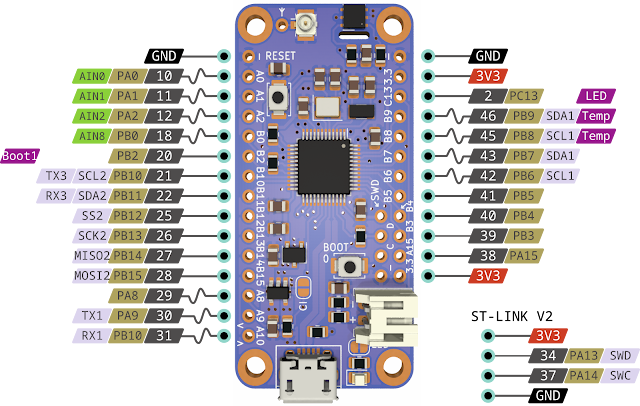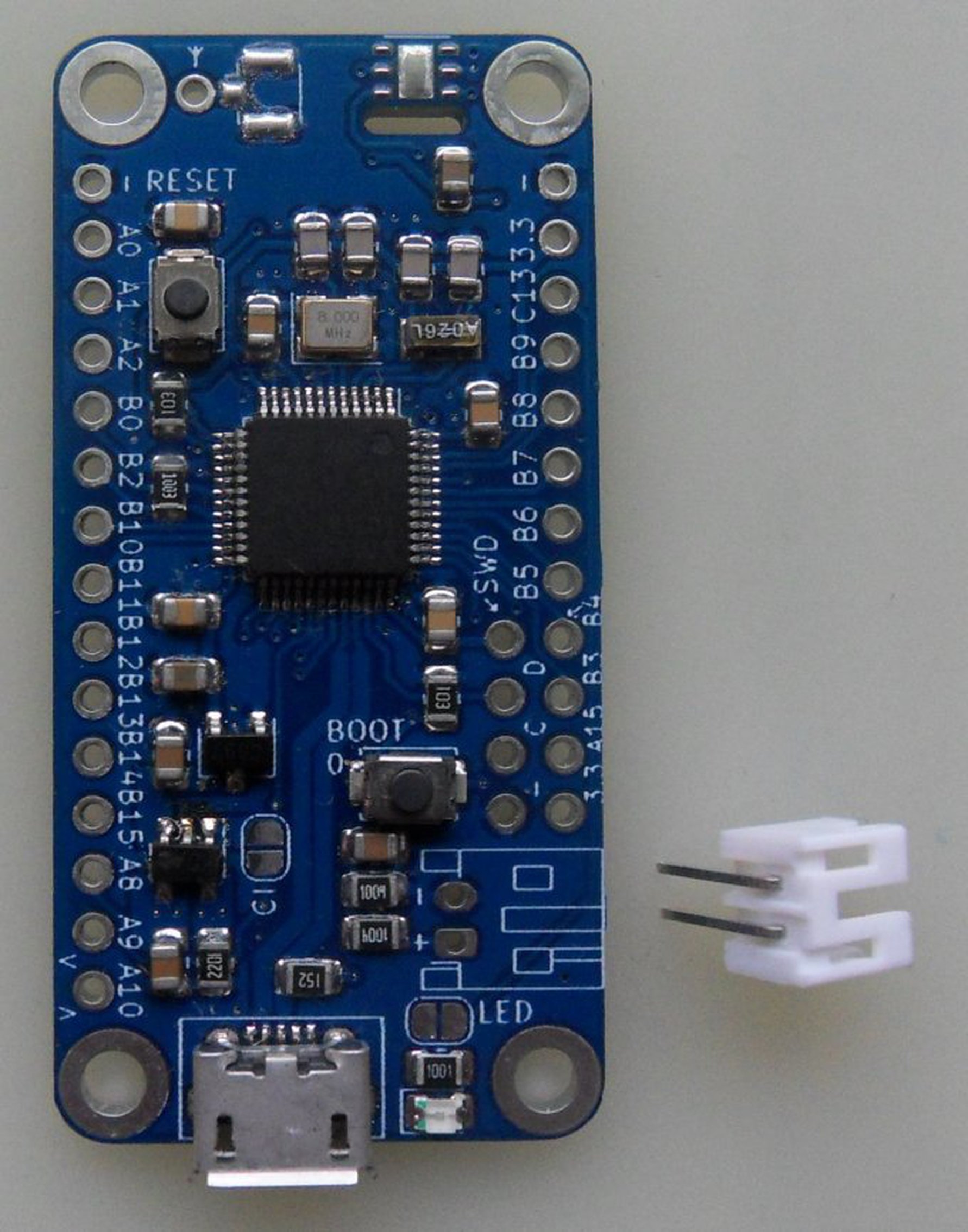Here comes the updated version of Radio Node Mini on STM32f103. There
are only a few visual changes, like places for the required pull-up
resistors for the I2C bus. I add them automatically when someone orders the
optional HTU21D temperature/humidity sensor. Other than that, only
silkscreen labels are enhanced. But the most important fact is the
change of way I make those boards.
The chip crisis is fading out
and with it all the components are getting cheaper. This brought me to
an idea to use fabrication services. And since I'm getting busier and I
value my free time even more, I tried to compromise and I let the new
nodes be assembled and soldered at the PCB shop. I invested the
effort into making a small panel of the boards and created BOM and CPL
files for the machine assembly.
Make it short, the service is
great. Actually it allows me to lower the price of the Mini Nodes,
simply because it takes me much less time. And not only by saving my
labor time, but also the components are priced similarly, or sometimes
even cheaper, to my preferred shop TME. There are only a few cosmetic problems with the micro USB ports, or the micro buttons which are not always aligned, but the boards are nicely soldered and even cleaned of the residue flux.
To celebrate this accomplishment, I made a new graphical pin-out diagram for the STM32 Radio Nodes Mini. Take a look:
.png) Also here is an example of my own groups (Garage, House) and zones (PIR, reed) setting for ground floor.
You can see here how authentication unit is attached to particular zone. Only
these zone is then set up with authentication delay. That is, when someone
trips these zones there is time allowed for the person to authenticate.
All other zones in house group trigger the alarm state immediately. You can
read more about it in zone's setting.
Also here is an example of my own groups (Garage, House) and zones (PIR, reed) setting for ground floor.
You can see here how authentication unit is attached to particular zone. Only
these zone is then set up with authentication delay. That is, when someone
trips these zones there is time allowed for the person to authenticate.
All other zones in house group trigger the alarm state immediately. You can
read more about it in zone's setting..png)

